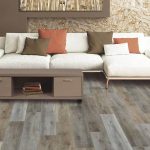Japan has many architects who have spread their work all around the world with their iconic projects. From which one was architect Fumihiko Maki who died on 6 June, 2024 at the age of 95
He was born in Tokyo on September 6, 1928 and studied with Kenzo Tange at the University of Tokyo where he received his Bachelor of Architecture degree in 1952. He then spent the next year at Cranbrook Academy of Art in Bloomfield Hills, Michigan. After completing a Master of Architecture degree at the Graduate School of Design (GSD), Harvard University, he apprenticed at the firms Skidmore, Owings and Merrill, New York and Sert Jackson and Associates in Cambridge.
Prior to returning to Tokyo in 1965 to open his own firm, Maki worked in the offices of SOM and Sert Jackson and Associates, as well as, the campus planning office of Washington University in St. Louis. Maki had maintained an active interest in education while continuing to grow his 45-person practice. While living in the United States, he taught architecture and urban design at Harvard and Washington University. After returning to Japan, he became a professor at Tokyo University, where he taught architecture until 1987. Maki has lectured extensively in Japan, the United States and Europe. His collective writings were published in the volume, Nurturing Dreams, by MIT Press in 2008.
Maki often spoke of the idea of creating “unforgettable scenes”—in effect, settings to accommodate and complement all kinds of human interaction—as the inspiration and starting point for his designs.
He is known for fusing modernism with Japanese architectural traditions. For instance, he introduced the concept of oku, which is a spatial layout unique to Japan in which spaces wind around a structure. This is demonstrated in the use of walls and landscape in the Shimane Museum of Ancient Izumo.
Along with a great many other Japanese architects, he maintained a consistent interest in new technology as part of his design language, quite often taking advantage of modular systems in construction. He made a conscious effort to capture the spirit of a place and an era, producing with each building or complex of buildings, a work that made full use of all that was presently at his command.
Fumihiko Maki received the Pritzker Prize for his work, which often explores pioneering uses of new materials and fuses the cultures of east and west. He called himself a modernist, unequivocally. His buildings tend to be direct, at times understated, and made of metal, concrete and glass, the classic materials of the modernist age, but the canonical palette has also been extended to include such materials as mosaic tile, anodized aluminum and stainless steel.
Other than this, he also received many professions highest accolades, including the Wolf Prize from Israel in 1988, the Thomas Jefferson Medal in Architecture in 1990, the Gold Medal of the UIA in 1993, the Arnold Brunner Prize from the American Academy of Arts and Letters in 1999, and the Praemium Imperiale from the Japan Arts Association in 1999. Acknowledging Maki’s commitment to master planning and his profound understanding of physical, social, and historic conditions involved in this discipline, Harvard University awarded him the Prince of Wales Prize in Urban Design in 1993. In 2011, the American Institute of Architects honored Maki with its highest accolade, the AIA Gold Medal.
Few of his famous projects includes Steinberg Hall at Washington University (1960s in St. Louis), Hillside Terrace (1969 in Tokyo), Building Square 3 at Novartis Campus (2009 in Basel, Switzerland), Annenberg Public Policy Center at the University of Pennsylvania (2009 in Philadelphia), MIT Media Lab Extension at Massachusetts Institute of Technology (2009 in Cambridge, Massachusetts), 51 Astor Place (2013 in Manhattan, New York), Tower 4 (150 Greenwich Street) of the new World Trade Center (2013 in Manhattan), Aga Khan Museum (2014 in Toronto) Skyline @ Orchard Boulevard (2015 in Singapore) Sea World Culture and Arts Center (2017 in Shekou) Aga Khan Centre (2018 in London).
Maki died on 6 June 2024, at the age of 95.




GIPHY App Key not set. Please check settings